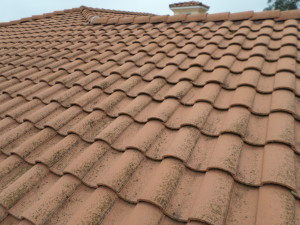
When it comes to protecting the occupants within a home or building from the weather, there is perhaps nothing more important than the roof. As well as people, roofs will also prevent moisture and any interior damage by working with the ventilation and insulation. Furthermore, they are an essential barrier between the sun and everything inside a building and overhangs can even protect the exterior too. However, roofing can be different materials on different buildings so the concerns regarding moisture can vary.
Maintenance
Ultimately, there are two different types of roofs, sloped/pitched and flat. For homes, these are likely to have pitched roofs whilst commercial and industrial buildings are more likely to have flat or at least slightly pitched roofs. For roofers, there will be some that work on all types while others specialist in one key area. To start the process, they will first lay insulation over the roof deck. Over this, they can then spread molten bitumen which is rather like tar. After this, roofing felt is partially laid over the surface. As strange as it sounds, a simple mop is used to spread the bitumen and ensure that it gets under the next layer; essentially, this will seal everything and make sure no water can get through.
Each one of these layers are called ‘plies’ and the roofer will continue layering until happy; different buildings require different amounts. However, the top layer will either be rough or smooth by mixing gravel or glazing it over. Recently, many roofers have decided to go over to single-ply waterproof rubber or even thermoplastic compounds and these membrane sheets can be rolled over the insulation to seal the seams. Then, the sheets can be held in place using stone ballast or adhesive mechanical fasteners. If this technique is used, the building needs to be able to hold the ballast.
For residential buildings, shingles is the most likely option and this starts with the cutting of three foot roofing felt strips. Once the roof is covered, overlapping rows of shingles can be nailed or stapled from the bottom upwards. Rather than dotting them around randomly the shingles will be measured and cut by the workers to fit perfectly and go around chimneys and any other obstructions. If two roofs intersect or a pipe is reached, flashing strips of metal can be cemented over the joints to ensure that it is watertight. To finish, the exposed nail heads can then be covered with caulking or cement as this can cause leaks if left. For tiles, shakes, or metal shingles, the process is very similar.
In some jobs, the concrete walls and floors may require waterproofing and some roofers will fulfil this task. To do this, the surfaces need to be prepared and this involves removing rough spots via chiselling or using a rubber brick; the latter will then be followed with a liquid waterproofing compound. Also, surfaces can also be sprayed with waterproofing material or otherwise attaching waterproofing membrane. For damp-proofing, a spray-on bitumen-based coating will be used.
Whatever your roofing type, be sure to get an objective opinion on its condition before hiring a contractor. Contact us and we will be happy to help!

